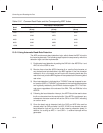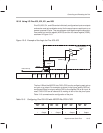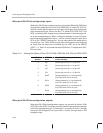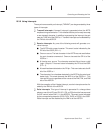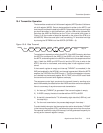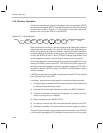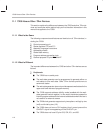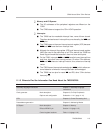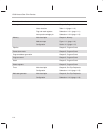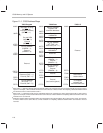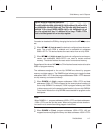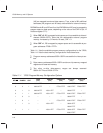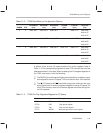
’C209 Versus Other ’C2xx Devices
11-2
11.1 ’C209 Versus Other ’C2xx Devices
This section explains the differences between the ’C209 and other ’C2xx de-
vices and concludes with a table to help you find the other information in this
manual that applies to the ’C209.
11.1.1 What Is the Same
The following components and features are identical on all ’C2xx devices, in-
cluding the ’C209:
Central processing unit
Status registers ST0 and ST1
Assembly language instructions
Addressing modes
Global data memory
Program-address generation logic
General-purpose I/O pins BIO and XF
11.1.2 What Is Different
The important differences between the ’C209 and other ’C2xx devices are as
follows:
Peripherals:
The ’C209 has no serial ports.
The wait-state generator can be programmed to generate either no
wait states or one wait state. Other ’C2xx devices provide zero to
seven wait states.
The wait-state generator does not provide separate wait states for the
upper and lower halves of program memory.
The ’C209 supports address visibility mode (enabled with the wait-
state generator control register). In this mode, the device passes the
internal program address to the external address bus when this bus is
not used for an external access.
The ’C209 clock generator supports only two options: multiply-by-two
( 2) and divide-by-two (
÷2).
The ’C209 does not have a CLK register; thus it cannot prevent the
CLKOUT1 signal from appearing on the CLKOUT1 pin.
The ’C209 does not have I/O pins IO3, IO2, IO1, and IO0.



